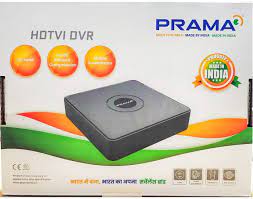Understanding the Internet Network: A Backbone of Digital Communication
Introduction to Internet Networks
The internet is a global network that connects millions of private, public, academic, business, and government networks from local to global scope. It is a network of networks that consists of both wired and wireless communication technologies. The vast array of interconnected networks uses standardized communication protocols like TCP/IP (Transmission Control Protocol/Internet Protocol) to facilitate data exchange across the world.
The Structure of the Internet
The internet’s structure can be visualized as a multi-tier model:
- Tier 1: At the top are Tier 1 networks owned by major telecommunications companies. These networks form the backbone of the internet by connecting with each other without any intermediaries.
- Tier 2: Tier 2 networks buy internet transit or peering agreements from Tier 1 providers to reach parts of the internet not within their own network.
- Tier 3: At the bottom are Tier 3 ISPs (Internet Service Providers) who connect consumers and small businesses directly to the internet using services purchased from higher-tier ISPs.
This hierarchical model ensures efficiency in data routing and redundancy in connectivity paths for reliability.
Data Transmission and Protocols
Data transmission over the internet involves sending information in small units called packets. Each packet contains both payload (the actual data) and header information that includes source and destination IP addresses. This allows routers across various networks to forward packets toward their final destination.
The primary protocols governing these transmissions are TCP/IP. TCP ensures reliable delivery of packets by establishing a connection between sender and receiver, while IP handles addressing and routing aspects.
The Role of ISPs
ISPs play a crucial role in providing access to the internet. They maintain their own network infrastructure and provide customers with connectivity through various technologies such as DSL (Digital Subscriber Line), cable modem, fiber-optic communication, mobile broadband, satellite internet access, and more.
Cybersecurity Considerations
As reliance on digital networks grows, so does the importance of cybersecurity within these infrastructures. It involves protecting networked systems from unauthorized access or attacks that aim to steal data or disrupt digital operations. Cybersecurity measures include firewalls, anti-virus software, intrusion detection systems (IDS), encryption protocols for secure data transmission, regular security audits, and adherence to best practices in IT security.
Conclusion
The internet network is an intricate system essential for modern communication and commerce. Its continued evolution includes advancing technologies like IPv6 for expanded addressing capabilities; faster transmission speeds with advancements like 5G; improved security measures; and ongoing efforts toward greater accessibility worldwide—ensuring its role as a cornerstone technology for societies globally.
“Exploring the Four Fundamental Network Types”
“An Introduction to Internet Networking Services”
4. “The Basics of Internet Networks Explained
- What is Internet short note?
- What are the 4 types of networks?
- What is the Internet networking service?
- What is the Internet network?
What is Internet short note?
The Internet is a global network of interconnected computer networks that allows for the exchange of information and communication worldwide. It serves as a vast repository of data, services, and resources accessible through various devices connected to the network. The Internet facilitates activities such as browsing websites, sending emails, sharing files, streaming media, and engaging in online interactions. It operates on a system of protocols and standards that enable seamless communication between devices across different locations, making it an indispensable tool for modern society.
What are the 4 types of networks?
There are four main types of networks: LAN (Local Area Network), WAN (Wide Area Network), MAN (Metropolitan Area Network), and WLAN (Wireless Local Area Network). LANs are used to connect devices within a limited area such as a home, office, or school. WANs cover larger geographic areas and connect multiple LANs together, often using public infrastructure like the internet. MANs are similar to WANs but cover a specific metropolitan area. WLANs use wireless technology to create local networks without the need for physical cables, providing flexibility and mobility for connected devices. Each type of network serves different purposes and has its own advantages in facilitating communication and data sharing.
What is the Internet networking service?
The Internet networking service refers to the infrastructure and technologies that enable devices to connect and communicate with each other over the internet. It encompasses a wide range of services and protocols that facilitate data transmission, such as TCP/IP, DNS (Domain Name System), and HTTP (Hypertext Transfer Protocol). Internet networking services play a crucial role in allowing users to access websites, send emails, stream content, conduct online transactions, and engage in various online activities. These services form the backbone of digital communication, providing the necessary framework for information exchange across the global network of interconnected devices.
What is the Internet network?
The Internet network is a vast interconnected system of networks that spans the globe, allowing for the exchange of data and information between users worldwide. It serves as a digital infrastructure that enables communication, access to resources, and the sharing of content across various devices and platforms. Essentially, the Internet network functions as a virtual web of connections that link individuals, organizations, and devices together, facilitating seamless communication and access to a wealth of information and services on a global scale.




